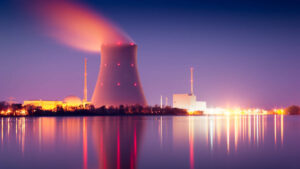Barry FitzGerald: There are three ASX uranium plays ready for a restart. Here’s the one you might have missed

‘Garimpeiro’ columnist Barry FitzGerald has covered the resources industry for +35 years.
Stockhead has been chock-full of yarns on why the long-forecast uranium renaissance has arrived.
So there is no reason to go over again the reasons why uranium – the spot price is up 94% price since 2020 – and the ASX-listed uranium stocks are hot again after more than a decade of being out in the cold.
Garimpeiro has contributed to the renaissance coverage and as might be expected, he has previously identified a number of junior explorers that could do well if they can match impressive results from the drill bit to the increased appetite for uranium stocks.
But he is changing tack today by taking a look at the project re-start uranium stocks. There are three of them on the ASX – Paladin (ASX:PDN), Boss (ASX:BOE) and Peninsula (ASX:PEN).
In the next nine months or so all three will be back in production after having previously parked up their projects because of unhelpful uranium prices at the time and some other factors.
Paladin and Boss have been well covered by Stockhead previously. So today’s focus is on Peninsula which could well be called the forgotten uranium stock.
It is also more in Garimpeiro’s territory with its $195 million market cap (15.5c a share mid-week) compared with Paladin’s $2.07 billion market cap, and the near $1bn market cap for Boss.
Paladin expects first production from its restated Langer Heinrich project in Namibia in the March quarter next year while Boss expects first production from its restarted Honeymoon project in South Australia in the coming December quarter.
Both projects are bigger than Peninsula’s flagship Lance project (across three deposits – Ross, Kendrick and Barber) on the northeast flank of the Powder River Basin in Wyoming.
But Garimpeiro nevertheless wonders whether the valuation gap is too wide, and that Peninsula is due for a re-rating on the proviso that it enjoys a successful re-start at Lance. Afterall, there is no better place to be producing uranium than the US.
Peninsula brought Lance into production in 2015 but recovery issues and unfriendly uranium prices saw the operation parked up in July 2019. It is coming back with a major difference.
Previously, like all of the in-situ recovery (or solution mining) uranium projects in the US, it used an alkaline solution to dissolve the sandstone-hosted uranium, with the pregnant solution pumped back to surface for processing.
Lance is coming back using a low pH (mild acid) solution with the expectation being that uranium recovery levels will rise from 50-60% in the alkaline process, to 80-90%.
Not all uranium deposits in the US are amenable to the low pH process because of the presence of carbonate material which chews up the acid, adding greatly to costs.
Testwork by Peninsula indicates it will not be a problem at Lance.
We’re about to find out anyway with Peninsula forecasting first meaningful production from its low-cost restart of Lance in the December quarter. That’s a little later than originally forecast but for a project with a potentially long-life, the delay is no big deal.
Lance comes with a sizeable resource base of 53.7m/lbs. There is also an exploration target of 104-163m/lbs to be chased down over time.
Production will start out at a modest level from existing well bores, with the plan to confirm the low pH process ahead of expanding to a more globally significant 2 million/lbs annually at a forecast all-in cost of $US45.74/lb.
Peninsula boss Wayne Heili is in Australia this week spreading the message about the pending re-start of Lance.
Heili has spent 35 years in the US uranium ISR industry and resides in Wyoming.
He is also a past president of the Uranium Producers of America, an organisation that has kept the strategic and environmental importance of the domestic industry – the US relies on nuclear power for 20% of its electricity – high on the agenda in Washington.
Related Topics

UNLOCK INSIGHTS
Discover the untold stories of emerging ASX stocks.
Daily news and expert analysis, it's free to subscribe.
By proceeding, you confirm you understand that we handle personal information in accordance with our Privacy Policy.








